Invited Speakers
1 Prof. Tetsushi Ueta, Tokushima University, Japan

Web site: https://risa.is.tokushima-u.ac.jp/~tetsushi/
Talk Title: Locating and Controlling Chaotic Saddles
Abstract: Some planar discrete nonlinear systems may have a horseshoe structure with stable and unstable manifolds associated with a saddle fixed point. Under this situation, as is well known, there are infinitely many unstable periodic points around the saddle. By making correspondence of the cross sections of manifolds and symbolic dynamics, one can obtain a “candidate area” containing an unstable periodic point whose period is given by the gray code. These unstable periodic points can be stabilized by applying any chaos control technique into that candidate area, for which the external force control method exhibits a very robust control performance. In this talk, a horseshoe structure derived by Poincaré mapping for a two dimensional nonautonomous hybrid system is analyzed as an example. A a locating scheme for unstable periodic points is demonstrated, and their control results are presented.
Biography: Professor Tetsushi Ueta received B.E., M.E., and Doctor of Engineering from Tokushima University. In 1998, he stayed in University of Houston as a visiting researcher for a year. He consistently studies bifurcation problems of non- linear systems including control of chaos, computations of bifurcation parameter values, graphical representations of bi- furcations, bifurcations of hybrid systems, and so on. He is a fellow of the IEICE, Japan.
2 Dr. Wun-She Yap, Centre of Cyber Security, Universiti Tunku Abdul Rahman, Malaysia

Web site: http://www2.utar.edu.my/cv/index.jsp?cv=yapws&reqPageId=aboutMe and https://sites.google.com/site/wunsheyap
Talk Title: Design and Security Analysis: Chaotic based image encryption vs Block cipher
Abstract: Due to the fast development of internet and network technology, multimedia data (i.e., image and video) has been transmitted between users more frequently and in vast proportions. In certain applications, images sent over the internet or any communication channel must be protected from being captured by any unauthorized users. General cryptographic primitives play an important role in providing confidentiality to images, such as block ciphers, stream ciphers and public key cryptographic schemes. However, different methods had been proposed to encrypt images in the literature. For instance, due to the statistical properties of chaotic systems, chaos theory had been used extensively in proposing image encryption schemes. Due to the strong correlation among pixels in a plain image, block ciphers (under electronic codebook mode) are not suitable for image encryption. Conceptually, an image encryption algorithm is very similar to a block cipher as a weak round function f is applied for a number of rounds to encrypt a plain image. Even though most of the image encryption algorithms do not specifically describe their Key Schedule algorithms explicitly as compared to block ciphers, an image encryption algorithm can similarly be seen to comprise of three different algorithms, i.e., Key Schedule, Encryption and Decryption. However, even though an image encryption provides confidentiality, the image encryption schemes are not analysed based on constructive cryptographic approaches. In this talk, we will review the similarities and the differences in designing and analysing the block ciphers and chaotic based image encryption schemes.
Biodata: Wun-She Yap is now the Deputy Dean (R&D and Postgraduate Programmes) at Universiti Tunku Adbul Rahman (UTAR). He is an associate professor in the Lee Kong Chian Faculty of Engineering and Science, UTAR, Malaysia. He received the Ph.D. degree from Multimedia University, Malaysia. He was the Chairperson of Centre for Cyber Security at UTAR from 2016 to 2020. He serves as the General Chair of ISPEC 2019 and has been invited to serve as program committees of a number of peer-reviewed security conferences and the guest editors of special issues "Information Technology and Its Applications 2018" handled by Symmetry, Neural Computing and Applications and "Trust Management and Security Enforcement in Internet of Things'' handled by Concurrency and Computation Practice and Experience. His research interests include information security, cryptography and artificial intelligent. He is now the Chartered Engineer (CEng) of IET.
3 Prof. Yuxia Li (李玉霞), Shandong University Of Science and Technology, China
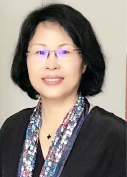
Web site: https://www.sdust.edu.cn/info/1050/1575.htm
Talk Title: Chaos found in a nanoscale memristor-based circuit
Abstract: TiO2 has been used by many as prototypical material to fabricate memristors. In this paper, a structure of Sn/TiO2-x/Ti (STT) memristor with different resistive switching is built. In terms of current-voltage characteristics, a faithful mathematical model is established for the STT memristor. Then, a chaotic circuit composed of the STT memristor is constructed. The current-voltage characteristics of the STT memristor and the complex dynamics of the circuit are investigated by numerical simulations with hardware experiments for illustration. For the first time, a physical memristor is manufactured, verified by the mathematical model and experimented by the chaotic circuit. Both simulation and the experimental results are consistent, demonstrating the reliable performance of the STT memristor.
Biography: Professor Yuxia Li received the B.Sc. degree from Shenyang Jianzhu University, China, in 1990, and the Ph.D. degree from Guangdong University of Technology, China, in 2005. She has been a Professor at the College of Electrical Engineering and Automation, Shandong University of Science and Technology, Qingdao, China, since 2008. Her current research interest covers memristor-based circuits and systems, chaotic encryption, nonlinear circuits and systems. She has also studied the fabrication of physical memristors, and researched on state transition mechanism of memristors. A series of nanoscale memristors were originally built, including BST, CST and BTC memristors. She has published more than 100 SCI papers and authorized more than 20 national invention patents. She has won more than 10 provincial or ministerial awards.
4 Prof. Tao Xiang(向涛), Chongqing University , China
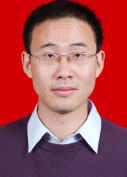
Web site: http://www.cs.cqu.edu.cn/info/1274/3455.htm
Talk Title: Perceptual Visual Security Evaluation
Abstract: Perceptual/selective encryption has been gaining widespread attention as an emerging technology for image privacy protection. However, few studies focus on the visual security evaluation of perceptually encrypted images, which has a significant impact on measuring the effectiveness and practicality of these encryption methods. Existing solutions usually adopt well-known metrics of visual quality assessment to measure the quality of encrypted images, but they often exhibit undesired behavior on perceptually encrypted images of low quality. In this talk, we introduce the concept of visual security index (VSI), and give our recent work on the design of VSI metrics, as well as a database for VSI evaluation.
Biography: Prof. Tao Xiang received the BEng, MS and PhD degrees in computer science from Chongqing University, China, respectively. He is currently a Professor of the College of Computer Science at Chongqing University. Prof. Xiang's research interests include blockchain, AI security, multimedia security, cloud security, data privacy and cryptography. He has published over 100 papers on international conferences including INFOCOM, MM, IJCAI, SIGKDD, ICDE, ICME, ASIACCS, etc., and international journals including ACM CSUR, IEEE TIT, TC, TIFS, TPDS, TMM, TCSVT, TCC, TSC, TCYB, IoTJ, etc. He also served as a referee for numerous international journals and conferences.
5 Prof. Wei Lin(林伟), Fudan University, China
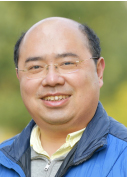
Web site: https://istbi.fudan.edu.cn/info/1244/2218.htm
Talk Title: Model-free and intelligent methods for data analytics in complex dynamical systems
Abstract: In this talk, I will introduce model-free frameworks of dynamical time series analytics. One framework is to detect the causation interactions among a large group of dynamical variables, which probably recovers a network hidden in a real-world system we are concerned. The second framework is to make a forecast of dynamical behaviors or/and an identification of tipping points based only on short-term and high-dimensional time series, which are usually believed to be challenging tasks. Both frameworks use the advantages of Taken's embedding techniques, which reveals that utilization of dynamical system theory is more likely to exploit useful information from time series not only from the models but also from the real-world systems.
Speaker: Dr. Wei Lin received the Ph.D. degrees in applied mathematics from Fudan University, Shanghai, China, in January, 2003 with specialization in dynamical systems, bifurcation and chaos theory. Now, he is a Distinguished Professor in applied mathematics of Fudan University, China. Currently, he is serving as the Dean of the Research Institute of Intelligent Complex Systems, the Vice Dean of the Institute of Science and Technology for Brain-Inspired Intelligence, and as the Vice Director of the MOE Frontiers Center for Brain Science (Fudan University), China. His current research interests include bifurcation and chaos theory, stability and oscillations in hybrid systems, stochastic systems and complex networks, data assimilation, causality analysis, and all their applications to systems biology and artificial intelligence. He has his recent works published in the prestigious journals including PNAS, PRL, Nature Commun., Nature Phys., IEEE TAC, and CHAOS. Dr. Lin is currently an AE of International Journal of Bifurcation and Chaos, and a member of Editorial Advisory Board of CHAOS, and an Editor of Chaos, Solitons & Fractals. He received the Excellent Young Scholar Fund and the Outstanding Young Scholar Fund from NSFC, respectively, in 2013 and 2019, and became a Highly Cited Chinese Researcher in General Engineering according to Elsevier from 2015 to 2019.
6 Prof. Wenwu Yu(虞文武), Southeast University, China
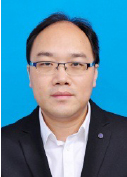
Web site: https://math.seu.edu.cn/yww/list.htm
Talk Title: Some Thoughts for Collective Intelligence of Networks: Distributed Cooperation
Abstract: In this talk, the distributed control and optimization based networked collective intelligence is introduced. First, networked collective intelligence is briefly discussed. Then, the recent advances on multi-agent collective behaviors, control, optimization, and some of their potential applications are also briefly reviewed. Furthermore, the new directions and challenges for the research work on this topic will be discussed.
Biography: Wenwu Yu received the B.Sc. degree in information and computing science and M.Sc. degree in applied mathematics from the Department of Mathematics, Southeast University, Nanjing, China, in 2004 and 2007, respectively, and the Ph.D. degree from the Department of Electronic Engineering, City University of Hong Kong, Hong Kong, China, in 2010. Currently, he is the Founding Director of Laboratory of Cooperative Control of Complex Systems and the Deputy Associate Director of Jiangsu Provincial Key Laboratory of Networked Collective Intelligence, an Associate Dean in the School of Mathematics, and a Full Professor with the Endowed Chair Honor in Southeast University, China.
Dr. Yu held several visiting positions in Australia, China, Germany, Italy, the Netherlands, and the USA. His research interests include multi-agent systems, complex networks and systems, disturbance control, distributed optimization, machine learning, game theory, cyberspace security, smart grids, intelligent transportation systems, big-data analysis, etc.
Dr. Yu severs as an Editorial Board Member of several flag journals, including IEEE Transactions on Circuits and Systems II, IEEE Transactions on Industrial Informatics, IEEE Transactions on Systems, Man, and Cybernetics: Systems, Science China Information Sciences, Science China Technological Sciences, etc.
He was listed by Clarivate Analytics/Thomson Reuters Highly Cited Researchers in Engineering in 2014-2020. He publishes about 100 IEEE Transactions journal papers with more than 20,000 citations. Moreover, Dr. Yu is also the recipient of the Second Prize of State xdtNatural Science Award of China in 2016.
7 Prof. Qigui Yang(杨启贵), South China University of Technology, China
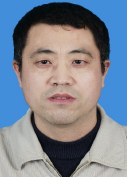
Web site: http://www2.scut.edu.cn/math/2017/1227/c14582a242258/page.htm
Talk Title: Complex Dynamics in the Unified Lorenz-Type System and 3D Autonomous Chaotic ODE Systems
Abstract: This report is devoted to analysis of complex dynamics of the unified Lorenz-type system (ULTS) with six parameters, which contain common chaotic systems as its particular cases. First, some important local dynamics are systematically investigated. Some adequate conditions for guaranteeing the occurrence of degenerate Hopf bifurcation (DHB) and the stability of the equilibria are given. Second, it is found that if DHB does not generate at the trivial equilibrium but generates at two symmetric nontrivial equilibria, then a small perturbation can lead that ULTS exhibits a chaotic attractor. If DHB takes place simultaneously at three equilibria of ULTS, then this system has an invariant algebraic surface, and rigorously prove the existence of some global dynamics such as periodic orbit, center, homoclinic/heteroclinic orbits. Third, it is shown that a singularly degenerate heteroclinic cycle can exist in the case b=0, and a chaotic attractor can be generated by perturbing this cycle for small b > 0. These results altogether indicate that the ULTS can exhibit complex dynamics, and provide a more reasonable classification for chaos in the 3D autonomous chaotic ODE systems developed based on the Lorenz system, in contrast to previous studies.
Biography: Qigui Yang, Professor of the second grade, Doctor of Science, Doctoral supervisor, teaching masters at South China University of Technology. He received his Master from Chongqing University, Ph.D. from Sun Yat-sen University, and the Postdoctoral from Tsinghua University. He has engaged in teaching and reaching the geometric theory of differential equations, the chaotic dynamical systems and stochastic dynamical systems and their applications. He is interested in studying the existence condition of chaotic complexity with simply systems and revealing the chaos mechanism and complex dynamical characteristics of chaotic systems. Also, he was awarded the first prize for “Guangxi Scientific and Technological Progress Award’’ (rank: 1/4), the second prize for “Guangdong Higher Education Provincial Teaching Achievement Prize’’ (rank: 2/5), and the excellent supervisor award in “Excellent Doctoral Dissertation of Guangdong Province” for three times consecutively. Up to now, he has published 130 papers in domestic and international professional journals including J. Differential Equations, Chaos, Int. J. Bifur. Chaos, Proc. Royal Soc. Edinburgh (A), of which 115 papers have been indexed in the SCI and positively cited over 1800. Moreover, he has hosted 5 projects from National Natural Science Foundation of China (NSFC) and 6 projects from provincial Natural Science Foundation on the topic of Chaos, and he also participated in the Major Research Instrumentation Program of NSFC, 3 other projects from NSFC and the Provincial Innovation Team Project. Besides, he has hosted 9 provincial teaching and research projects. In addition, he was engaged as an evaluation express for NSFC with both meeting and communication deciding. Until now, he has guided 4 postdoctoral, 21 graduated Ph.D. students (including 2 international students) and 34 graduated master students and is supervising 1 postdoctoral, 5 Ph.D. and 5 master candidates.









